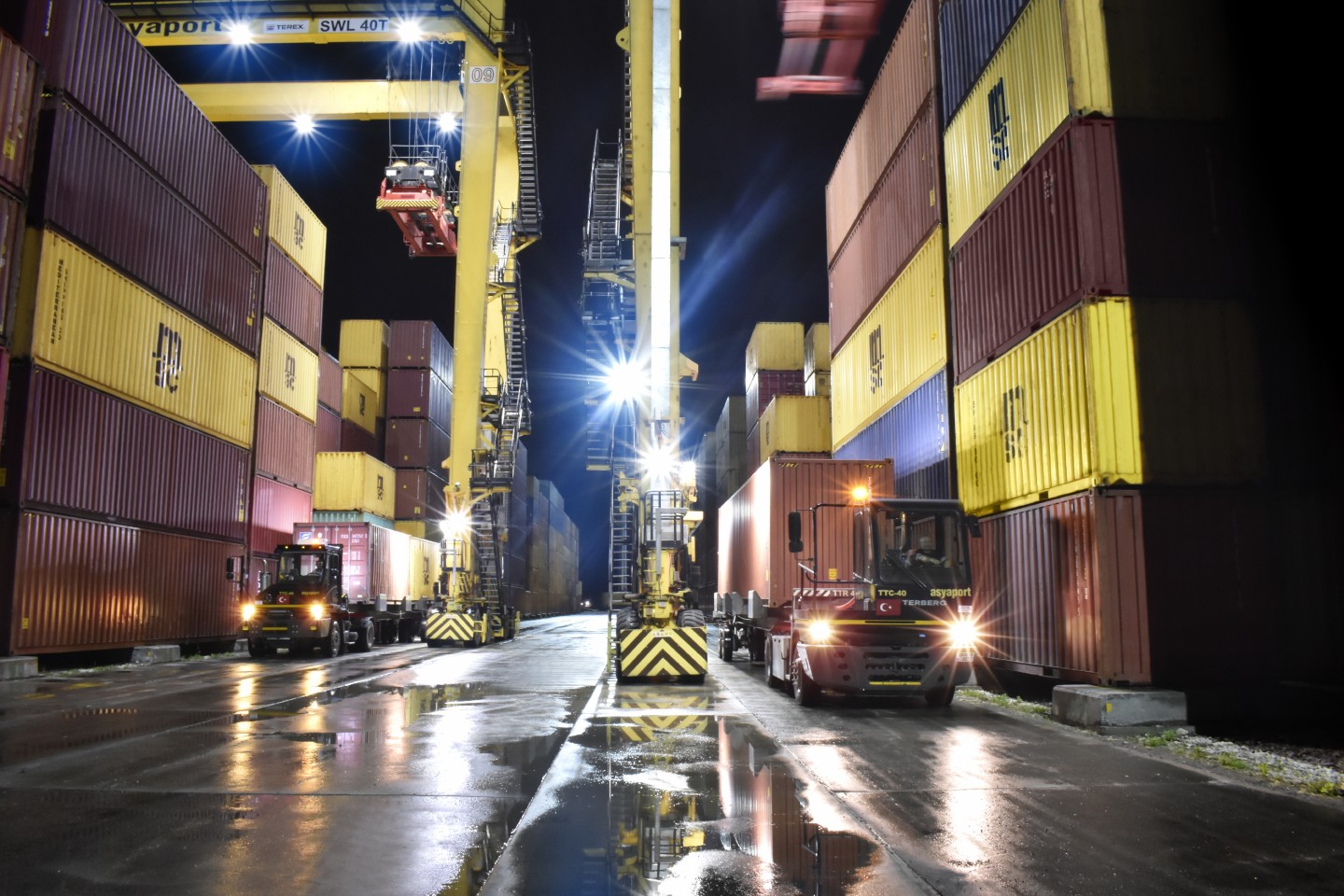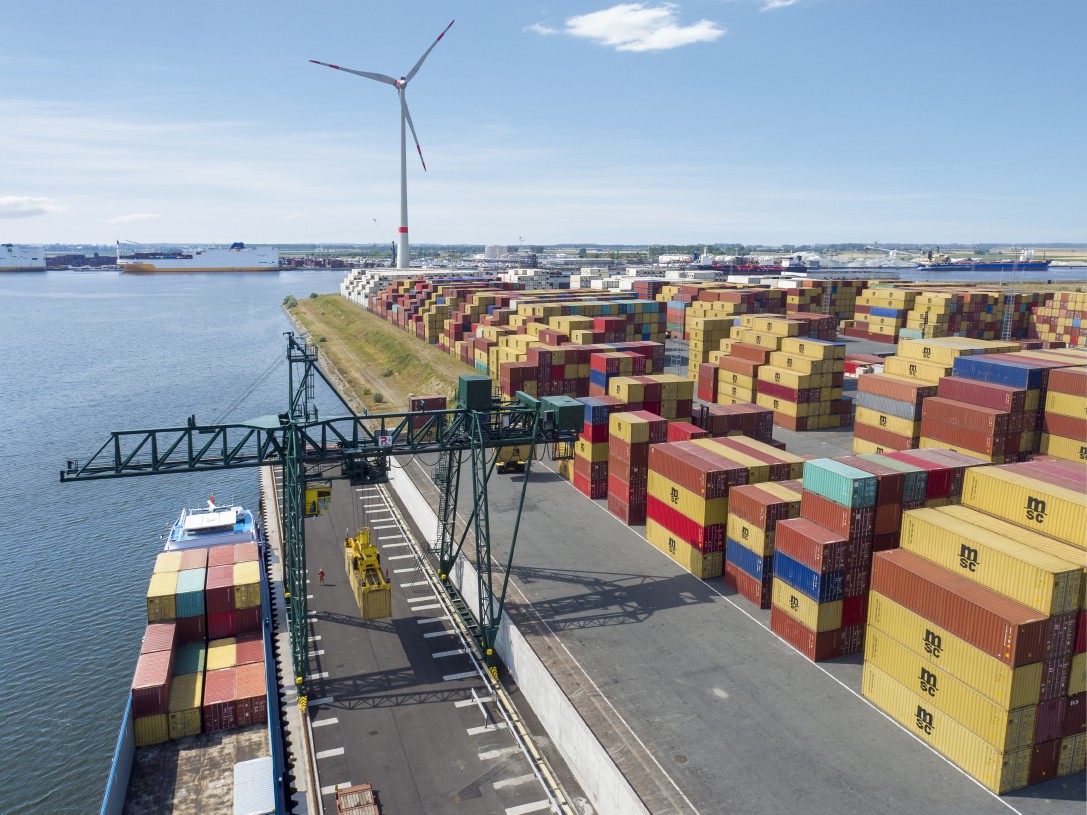
/fr/lp/blog/shipping/2023/port-development-and-expansion
Navigating the Future: the Importance of Port Development in International Shipping
21/02/2024
Updated: 04/11/2025
Key Takeaways:
- Port expansion is reshaping trade efficiency and competitiveness by accommodating mega-ships, streamlining intermodal connections, and enabling faster, more cost-effective global trade flows.
- From electric cranes and alternative fuels to eco-friendly facilities and biodiversity protection, future-ready ports infrastructures are being designed to cut emissions and improve energy efficiency.
- Expanded capacities and strategic positioning are helping to develop ports as transshipment hubs, influencing shipping routes and attracting foreign investment.
Driven by factors like increased trade volumes, larger vessels, and global supply chain demand developments, international port development is vital. Port expansions play a crucial role in enhancing a region's economic growth, trade efficiency, and connectivity. Beyond this, a new port infrastructure can pave the way for implementing new equipment, and technology, and ultimately helps ensure further or enhanced connectivity.

Unveiling the Vital Role of Ports in Global Prosperity
Ports play a crucial role within the global supply chain due to their function as trade gateways, and their ability to facilitate the movement of goods and commodities between different regions. Specifically, ports are vital for numerous reasons, including:
Unveiling the Vital Role of Ports in Global Prosperity

Ports play a crucial role within the global supply chain due to their function as trade gateways, and their ability to facilitate the movement of goods and commodities between different regions. Specifically, ports are vital for numerous reasons, including:
Ports serve as the primary entry and exit points for international trade and act as key connection points for regions with diverse economies and markets.
Strategic trade routes
The strategic positioning of many ports along major international trade routes makes them essential hubs for transshipment.
Intermodal connectivity
Advanced port infrastructure supports intermodal transportation and means cargo can seamlessly transition between ships, trucks, trains, and airplanes, enhancing supply chain efficiency.
Large scale distribution centres
Goods that come into ports are often sorted, consolidated, and redistributed to local and regional markets.
Efficient cargo handling
Ports are equipped with specialised equipment and technologies for efficient cargo handling, storage, and distribution. These resources streamline the loading and unloading of goods, reducing transit times and costs.
Access to specialised services
Across the globe, some ports specialise in handling specific types of cargo, such as bulk commodities, containerised goods, or perishable items. This type of value-added service ensures that specific industry needs can be met.
Supporting economic growth and investment
Ports contribute significantly to national and regional economies by generating employment, attracting business investments, and fostering industrial growth. They create jobs not only within the port facilities but also in related industries like logistics, transportation, and manufacturing.
Ports' capabilities often influence foreign direct investment decisions. Countries with well-developed and efficient ports are often more attractive to foreign investors looking to establish or expand their operations.
Fostering trade relationships
Ports become points of interaction and exchange for cultures, technologies, and ideas, leading to increased international cooperation and improved trade relationships.
Global competitiveness
Efficient ports contribute to lower transportation costs, reduced lead times, and improved overall competitiveness in international markets.
Port expansion is essential for accommodating growing trade, fostering economic prosperity, reducing logistical challenges, and ensuring that different businesses can remain competitive in the global market.
This is evidenced by Namibia’s planned port infrastructure expansion which is designed to support the country’s growing energy industry through the addition of new berths and quay walls.
Similarly, a port in Savannah implemented all-electric cranes and 8 new ship-to-shore cranes in order to extend the port’s ability to serve vessels capable of carrying more than 16,000 TEU. Future expansion plans include the implementation of 55 hybrid-engine rubber-tired gantry cranes to aid with emission reduction caused by port operations.
Commercial port expansion is also hugely advantageous for countries looking to accommodate additional trade. In Northern Ireland, Belfast Harbour has announced plans to create a heavy-duty quay and deep-water berth in order to support their growing cruise trade. These developments will also support the expansion of dry bulk, breakbulk, and possibly project cargoes for the offshore wind sector.

The Driving Forces Propelling Port Development
Port expansion can be driven by numerous economic, technological, and strategic factors including:
The Driving Forces Propelling Port Development

Port expansion can be driven by numerous economic, technological, and strategic factors including:
Increasing Trade Volumes
As global trade continues to grow, ports face higher demand for handling larger volumes of goods. Port expansions are necessary to accommodate this increased trade flow and prevent congestion that could hinder trade efficiency.
Accommodating Larger Vessels
With the development of mega-container ships and other large vessels port infrastructures need to expand to create deeper berths and broader navigation channels required to accommodate them.
Containerisation
The adoption of containerisation has revolutionised international trade. As a result, ports need to adapt by expanding container terminals and storage areas to handle the larger number of containers arriving on ships.
Growth and Investment
Because port expansions often contribute to regional and national economic growth, governments, and private investors recognise the potential for job creation, increased revenue from trade-related activities, and the attraction of foreign investment.
Similarly, population growth in urban areas can drive demand for consumer goods. In turn, this requires ports to expand to increase their import and export activities to handle the resulting trade volume.
Infrastructure Modernisation
Aging port infrastructure may no longer meet the demands of modern shipping practices and technology. Port expansions involve modernising facilities to include advanced technologies, automated systems, and eco-friendly solutions.
Abundant Natural Resources
Countries with copious natural resources, such as minerals or energy products, often require expanded ports to accommodate the export of these resources to global markets.
Tourism
As evidenced in Belfast, ports that serve as popular cruise ship destinations may need to expand to accommodate the growing cruise industry and provide improved passenger facilities.
Ultimately, ports must continually adapt and expand their capacities to remain competitive, meet the demands of adynamic global trade landscape, and ultimately facilitate efficient trade flows.
Port development can have significant economic benefits. Their ability to accommodate larger vessels, increase cargo handling capacities, and enhance trade efficiency has a significant impact on global trade networks and shipping routes in numerous ways:
Shipping route optimisation
Shipping lines often seek the most efficient routes to reduce costs and transit times. Expanded ports can be strategically located to offer better connectivity between different regions, causing shipping lines to adjust their routes accordingly.
Expanded Capacity for Mega-Ships
Port expansions often involve deepening berths and widening navigation channels to accommodate mega-container ships and other large vessels. This enables shipping lines to use these expanded ports as key hubs, influencing the routes they choose to take and driving more trade through certain regions.
New Transshipment Hubs
Ports that undergo development can become transshipment hubs. This can reshape shipping routes as vessels may now include additional stops at these hubs, optimising the distribution of goods across multiple regions.
Global Supply Chain Reconfiguration
Ports with expanded capacities can lead to reconfigurations in supply chains. Manufacturers and shippers may opt for different transportation routes, choosing the most efficient and cost-effective paths that involve the newly expanded ports.
Sustainability
Sustainability has become a fundamental aspect of modern port development, reflecting the need to protect the environment and support local communities. It is also a vital aspect in ensuring the long-term success of port operations in a rapidly changing world.
As the world becomes more conscious of environmental issues, port authorities, governments, and stakeholders are recognising the significance of integrating sustainable practices into port expansion plans.
Environmental Impact Assessment (EIA)
Before undertaking a port expansion, an Environmental Impact Assessment (EIA) is conducted to evaluate potential environmental effects, and to planners understand the project's ecological implications and design strategies to mitigate negative impacts.
Emission Reduction and Air Quality
Sustainable port development focuses on reducing emissions by using cleaner technologies, electrification of equipment, and stricter regulations.
Alternative Fuels and Technologies
Port expansions can involve creating facilities to support the adoption of cleaner fuel options such as LNG (liquefied natural gas) and hydrogen for ships.
Energy Efficiency
During port development lighting systems, and the implementation of renewable energy sources can be implemented to improve energy efficiency.
Waste Management and Pollution Prevention
Port expansions should consider effective waste management strategies, and implement systems for treatment of pollutants, recycling, and proper waste disposal.
Biodiversity Conservation
As ports are often located in ecologically sensitive areas, sustainable port expansions will aim to implement protective measures, habitat restoration, and maintain green spaces to minimise habitat disruption or loss.
Eco-Friendly Infrastructure
Similarly, port developments that incorporate eco-friendly design elements (green roofs, permeable surfaces, and native vegetation) can minimise the ecological impact of new structures.
Community Engagement
Sustainability involves engaging with local communities to address their concerns and incorporate their input into the expansion plans. Port development should ensure that the expansion is aligned with the needs and values of the people living in the area.
Regulations, Certifications, and Standards
Many countries have established environmental regulations and international agreements related to port operations, and sustainable port infrastructure should be compliant with these.
Likewise, many ports are pursuing certifications such as the Green Marine program and the EcoPorts initiative that recognise their commitment to sustainability and their adherence to certain environmental standards.
Climate Resilience
Because ports are vulnerable to climate change impacts such as sea-level rise and extreme weather events, port expansions need to incorporate climate resilience measures, like raising infrastructure above expected sea levels and strengthening structures to withstand storms.
Ultimately, sustainable port expansions need to be designed with the future in mind. By considering the potential impacts of climate change, technological advancements, and changing trade patterns, port development can ensure that the port remains viable and resilient for decades to come.
Ask MSC
Contact us today to explore how MSC’s full range of shipping and transportation solutions could be beneficial for your business.
Discover our Range of Solutions
Shipping Solutions
Learn MoreInland Transportation & Logistics Solutions
Learn More
Warehousing & Storage Solutions
Learn More
Digital Business Solutions
Learn MoreFAQs
What is port expansion and why is it important?
Port expansion is the enlarging or upgrading of existing port facilities to enable them to handle more cargo and larger vessels.
It’s important because growing global trade requires higher capacity, deeper berths, and more modern equipment to avoid congestion and keep supply chains efficient.
What are the main drivers of port development today?
Key drivers of port development include:
- Trade volumes
- The rise of mega ships
- Containerisation
- Urban population growth
- The need for a more sustainable, resilient green port infrastructure.
How does port expansion affect shipping routes?
Expanded ports can often become new trade hubs or transshipment points. As a result, global shipping routes can change to incorporate them.
